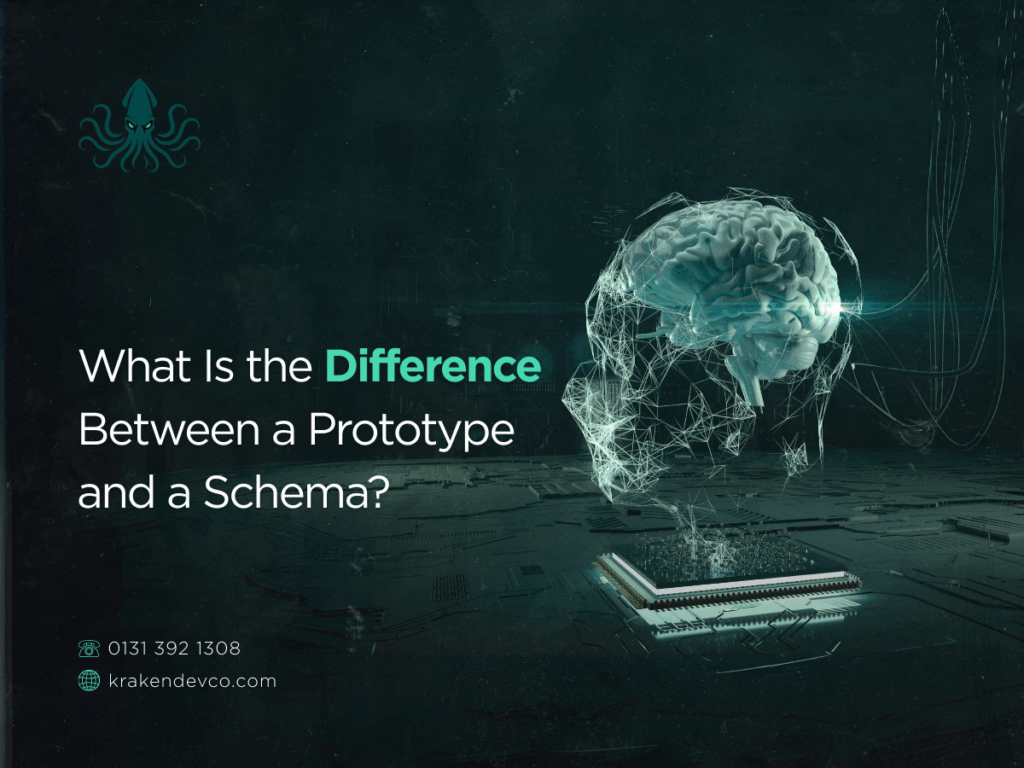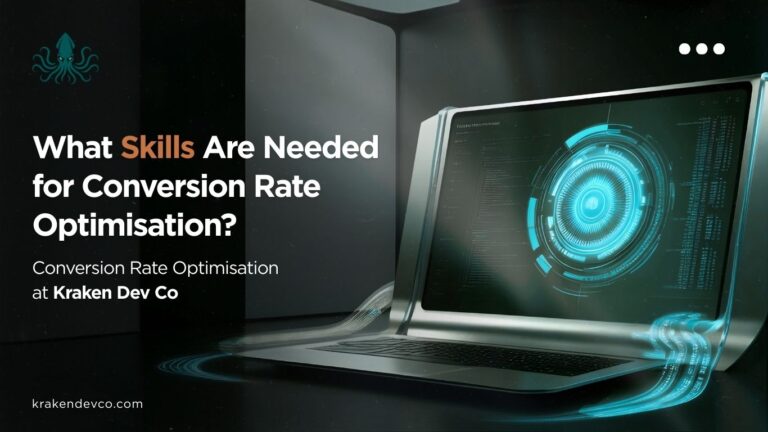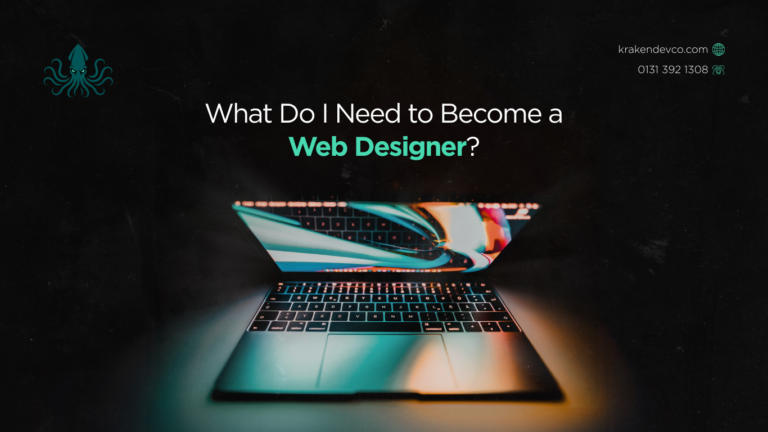
Ever wondered how your brain knows a robin is a bird, but doesn’t expect it to swim like a duck or look like an ostrich?
That split-second categorisation happens through mental shortcuts—most notably prototypes and schemas. At Kraken Dev Co, we live and breathe user experience, AI modelling, and interface logic. And beneath every decision engine, design framework, or semantic classifier, you’ll find these cognitive workhorses running in the background.
This blog breaks down the key differences between prototypes and schemas, why they matter, and how they impact fields from design to artificial intelligence.
Understanding Mental Models: Prototypes vs Schemas
Humans are categorisation machines. We don’t experience reality raw—we process it through mental models that simplify, structure, and prioritise input.
Two of the most powerful models we use are prototypes and schemas. Both serve as shortcuts, but they work differently.
| Feature | Prototype | Schema |
| Definition | Mental representation of the most typical example of a concept | Organised framework for understanding behaviour or sequences |
| Purpose | Categorise and label objects | Predict and interpret actions or events |
| Flexibility | Low – centralised around a fixed idea | High – adapts to context |
| Example | A robin as your idea of a “bird” | A restaurant schema: walk in, get seated, order, eat, pay |
Bottom line?
A prototype helps you say, “That’s a dog.”
A schema helps you know what to do when you walk into a vet’s office.
What Is a Prototype?
A prototype is your mental best-fit model of a category.
Think of the word “car”. You probably visualise a mid-sized vehicle, four wheels, internal combustion or electric engine, front seats, rear seats, boot. That imagined standard? That’s your prototype. It’s not the average of all cars; it’s the one that, based on experience, feels like the centre of the concept.
Core Properties of Prototypes
- Efficiency over precision – Prototypes get you there fast, but might miss edge cases.
- Experience-driven – You build them from what you’ve seen, heard, and imagined.
- Culturally influenced – A prototype in Tokyo may differ from one in Liverpool.
- Evolving – While they start fixed, they shift with new data.
These traits explain why a robin might be your “bird” prototype, even though penguins exist. Prototypes simplify—but they don’t cover every case.
The Psychology Behind Prototypes
Cognitive psychologist Eleanor Rosch formalised prototype theory in the 1970s. She challenged the old-school idea that categories had strict definitions. Instead, she argued that our brains work by identifying central examples and measuring new input against those.
So instead of defining “furniture” as an object for human use that may be used to sit, rest, or store things, you might just picture a chair. That chair becomes your baseline, and everything else gets compared to it.
This concept shook up psychology—and laid groundwork for AI and UX design decades later.
What Is a Schema?
Schemas are broader frameworks—mental blueprints for how things usually unfold. They help you predict, react, and interpret context.
Picture this: You enter a restaurant. Without thinking, you expect a host, a menu, a server, a bill. That’s your restaurant schema. It helps you behave correctly without having to analyse every detail.
Where Schemas Thrive
- Behavioural scripts – e.g. what happens in an interview, classroom, airport.
- Social assumptions – e.g. what a “boss” should do, how a “holiday” feels.
- Information recall – e.g. interpreting news or conversations based on stored frameworks.
Schemas are more flexible than prototypes. They adapt to context and can handle exceptions better. But they also carry risk—especially in forming rigid social expectations.
Prototype vs Exemplar: A Third Way
While prototypes represent the central ideal, exemplars are mental databases of specific past examples.
Think of a bird. A prototype might be a robin. An exemplar model pulls up actual birds you’ve seen—crows, parrots, hawks—and compares the new input to them all.
| Feature | Prototype | Exemplar |
| Memory Load | Low | High |
| Processing Speed | Fast | Slower |
| Accuracy | Great for standard examples | Better for outliers |
| Flexibility | Low | High |
This is why in fields like medical diagnostics or AI, exemplar models may outperform prototypes—they account for atypical cases.
How Prototypes Are Formed
Prototypes form implicitly. You don’t sit down and define them. Your brain builds them over time by:
- Exposure – More common items become the standard.
- Imagination – You can prototype concepts you’ve never seen (e.g. a dragon).
- Cultural input – Media and education shape what feels “normal”.
- Reinforcement – The more often a prototype works, the stronger it becomes.
For instance, if most of your early teachers looked or behaved a certain way, your brain might lock that into the “teacher” prototype.
Where It All Shows Up: Real-World Applications
1. Education
- Language learning – Prototypes help students latch onto standard grammar patterns or vocabulary structures.
- STEM instruction – Teachers rely on “prototypical” equations or problem types to prepare students for common challenges.
- Bias education – Teaching students how prototypes form helps them spot and question social assumptions.
2. Artificial Intelligence
- Classification algorithms – Many machine learning models assign input to categories based on prototype proximity.
- Natural language processing – Word meanings are clustered around central concepts.
- Bias detection – Knowing how AI builds and relies on prototypes helps avoid embedded unfairness.
3. UX and Interface Design
- Prototyping – UX flows and mockups literally begin with prototype models to simulate real experience.
- Mental models – Great UI matches users’ prototypes (e.g. carts for shopping, envelope icons for email).
- Content chunking – Interfaces use information grouping to align with how people naturally process data.
Chunking and Prototype Formation
“Chunking” is the process of grouping related information. It’s the reason “D-O-G” instantly forms the idea of a dog in your mind, rather than being processed as three letters.
This isn’t just helpful—it’s how prototypes are built and retrieved.
- Chunking speeds learning
- It reduces cognitive load
- It supports both schema construction and prototype comparison
Smart design uses chunking. AI systems need it. Brains rely on it.
When Prototypes Turn Toxic: Bias and Stereotypes
While prototypes enable fast thinking, they also carry risk.
Implicit Bias
Prototypes can hardwire harmful shortcuts. If media repeatedly shows CEOs as white and male, your brain may form that prototype—subconsciously excluding others.
How to Counter It
- Awareness – Name your prototypes.
- Exposure – Challenge them with edge cases and counter-examples.
- Reflection – Override mental shortcuts with conscious judgement.
The difference between helpful prototypes and damaging stereotypes is awareness and adaptability.
Neural Basis: How the Brain Handles Categories
Prototypes aren’t conceptual fluff. They’re neurologically grounded.
- Prefrontal cortex – Logic, categorisation, rule-setting.
- Fusiform gyrus – Facial recognition, social sorting.
- Basal ganglia – Habit and pattern learning.
- Visual cortex – Matching sensory input to mental templates.
When any of these areas are impaired, so is categorisation—seen in disorders like agnosia or some forms of autism.
Summary: The Strategic Takeaway
Prototypes define. Schemas guide. Exemplars compare.
At Kraken Dev Co, we use these models not as abstract theory, but as tactical tools. Whether we’re building an AI classifier, mapping a UX journey, or training a search algorithm, these concepts are embedded in every decision we ship.
Use prototypes to simplify.
Use schemas to predict.
Use exemplars when precision matters.
FAQs
Q: Are prototypes and stereotypes the same?
No. Prototypes are cognitive defaults for quick categorisation. Stereotypes are often harmful overextensions into social judgement.
Q: Can prototypes change?
Absolutely. New data, reflection, and exposure reshape them.
Q: Do AI systems use prototypes?
Yes. Many classification and NLP systems operate on prototype logic.
Q: Are exemplars more accurate?
For complex or unusual cases, yes—but they require more memory and processing time.
Q: What’s the learning relevance?
Prototypes aid speed. Schemas aid navigation. Both need updating to stay relevant.
Want UX, AI, and systems that think like your users do?
Work with Kraken Dev Co →.



